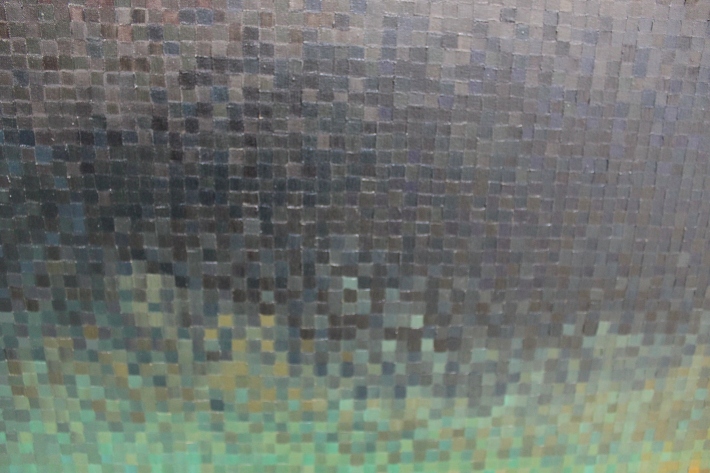I began this paining after an immersion in the early work of Michel Foucault.
The image is intended to communicate the idea that Madness only exists within Reason, and can only be understood as Unreason. Madness is a concept within Knowledge, but can only be identified in the figure of the madman.
Because the madman cannot contribute to the order of society, he is kept in a space of confinement. The confinement of the madman within society is an embodied consequence of the way the concept of madness is held in place by its relations within the discourse of Knowledge.
An understanding of madness is the recorded perceptions of a reasonable doctor who contributes pieces of discourse to a system of Knowledge & Power. The concept of madness is the conversion of the raw energy of the madman into discursive understanding that remains both rigid and repeatable, but also capable of being rearranged and changed.
The scratched birds of the painting become gridded birds of order – this is a visualization of the dispersion of madness into reason & discourse. The grid is used to represent reason, order, and the system of differences.
The painting attempts to situate itself between the critical consciousness and the tragic experience of madness.
Without reason, madness ceases to become madness, and is instead one of many possibilities of consciousness or animations of the body. If consciousness is a large circle, reason is a concentric circle within consciousness, and madness a concentric circle within reason. However the body animated by madness is capable of extended limits – the body becomes capable of things that the reasonable body is not.
Reason and Madness are bound. Madness is an active force, while Reason is a reactive force. Yet, reason is the dominant force, and dominates Madness through quantity of force.




Pingback: Annotated Bib: “Modernist Women’s Memoir, War and Recovering the Ordinary: H.D.’S “The Gift”” | Write on the World